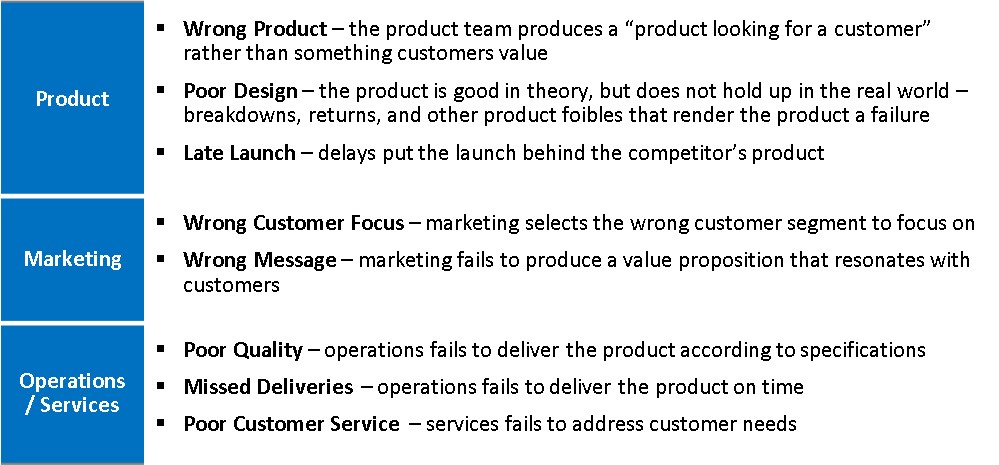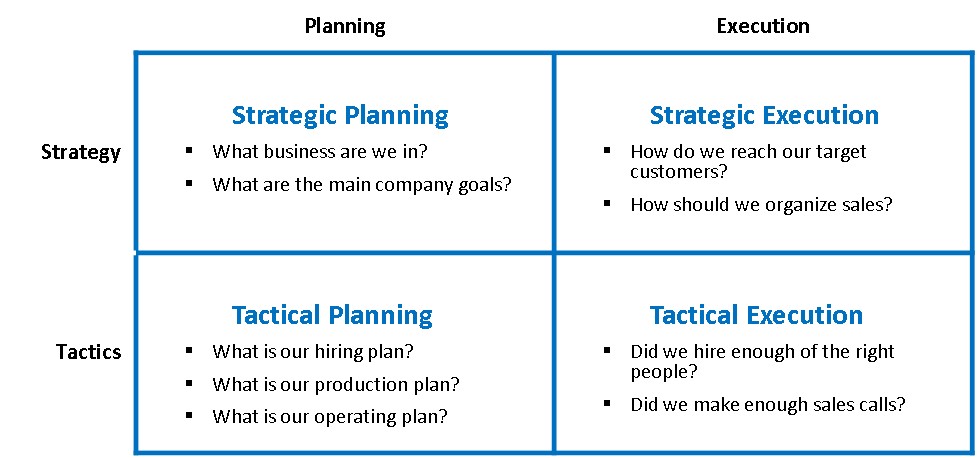CEO: Is Your Sales Leader Set Up to Fail?
Good sales leaders are hard to find—and often harder to retain. Expectations that are either unrealistic or are out of alignment with the rest of the organization are often the cause. Understanding and avoiding the root causes for the failure of good sales leaders is the focus of this blog series. The reasons are rooted in the misalignment of “the business” and the sales organization—an especially common challenge among companies expanding into new products, new markets or new channels. These endeavors represent shifts in corporate strategy, product development, marketing and operations. Aligning these efforts with sales is the key to driving success and growth. How does a company know if it is setting up its VP of sales for success or failure?
Tactical vs. Strategic Sales Leaders
Broadly speaking there are two different types of sales leaders: tactical and strategic. If the company needs one type but hires the other, things often don’t work out well. A tactical VP of sales excels at scaling a proven model. They attract, on-board and manage top sales talent to execute a standardized process. On the other hand, a strategic VP of sales excels at adapting the sales model to new business strategies. This is extremely important when companies are launching new products, expanding into new markets, or using new channels. To accomplish this, the strategic VP of sales needs a seat at the table with other C-levels. They therefore have a “voice” when it comes to aligning other functions with the sales organization. They may be an officer of the company.
Companies that grow big with a successful single product often do so with a good tactical VP of sales driving consistent execution. When these same companies launch new products and expand into new markets and channels, the sales model must adapt and typically becomes more complicated. Three things can go wrong:
- The incumbent VP of sales lacks the strategic experience to adapt the sales model.
- The incumbent VP of sales works to change the sales model, but the new model fails due to lack of alignment with product, marketing, services and operations.
- The incumbent VP of sales adapts the sales model, has the buy-in from the CEO and achieves alignment with other functions. Yet the new business still fails.
The VP of sales often takes the blame when the company misses plan. But in the second scenario, it’s not a sales issue. Below are a few possible explanations:

Note the common ground among these issues: they are all outside the control of the VP of sales.
Being Set Up…for Success
A sales force is only as good as the company behind it. When corporate strategy changes, alignment across all functions is critical. A business is a multiplicative system, not an additive one—the system is only as strong as its weakest link. Some organizations attempt to solve this through structural change, appointing a chief commercial officer or chief revenue officer with broader accountability across functions. This can help, but it can also simply reposition the problem and may even create more bottlenecks. Structural changes alone do not solve the alignment issue. It requires careful translation of the updated strategy into tactical planning and execution activities–it requires the discipline of strategy execution via a standardized process, rules of engagement and supporting tools.
Strategic Execution
Great strategy doesn’t always translate into great execution. An organization may be great at strategic planning (e.g., the annual and quarterly offsite) and tactical planning (e.g., operations reviews) and execution (e.g., day-to-day management). However, strategic execution–translating strategy into change initiatives and properly launching and managing these initiatives is often a yawning gap. The diagram below illustrates where the alignment breakdown typically occurs.
FIGURE 1: Planning and Execution Matrix

Why is strategic execution a common flashpoint? C-suite leaders often prefer to delegate this task to functional leaders accustomed to tactical planning and execution, but new or unaccustomed to the requirements of strategic execution. Without adequate direction and cross-functional accountability, these efforts can result in “random acts of strategy”—initiatives, programs and change efforts that may not be aligned to the original vision.
Accountability Drives Alignment, Which Drives Strategic Execution
To achieve alignment, the leadership team must institute and commit to a set of processes designed to ensure the same level of rigor and accountability for strategy execution as commonly exists for tactical execution. These processes drive ownership, visibility, accountability and therefore alignment across product development, finance, marketing, sales, service and operations. Alignment enables strategic execution, which sets up the VP of sales and the company for success.
The three accountability processes most commonly needed for strategy execution are:
- Offering Accountability – drives product, marketing and sales alignment
- Revenue Accountability – drives sales and finance alignment
- Delivery Accountability – drives sales, services and operations alignment
The next three blogs will describe each of these alignment efforts in greater detail.
Every VP of sales wants to be successful and surpass the company plan. When company strategy calls for expansion with new products, markets or channels, it requires great strategic execution. This calls for alignment, which requires accountability across interdependent functions. Doing so will set up the VP of sales for success. Even then, some will fail. Being a VP of sales is not for the faint at heart.
Learn more about the Alexander Group’s revenue growth strategies.
